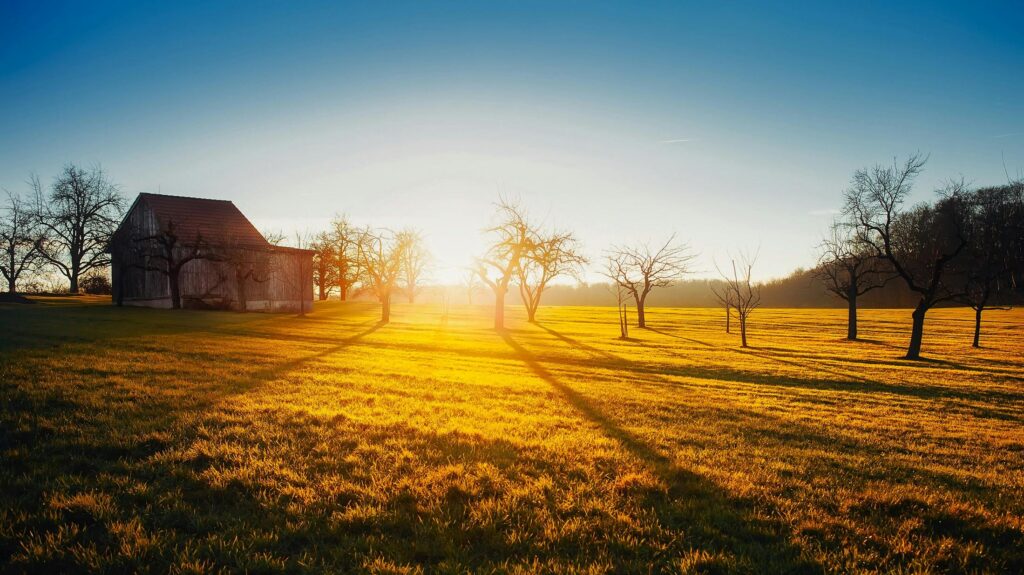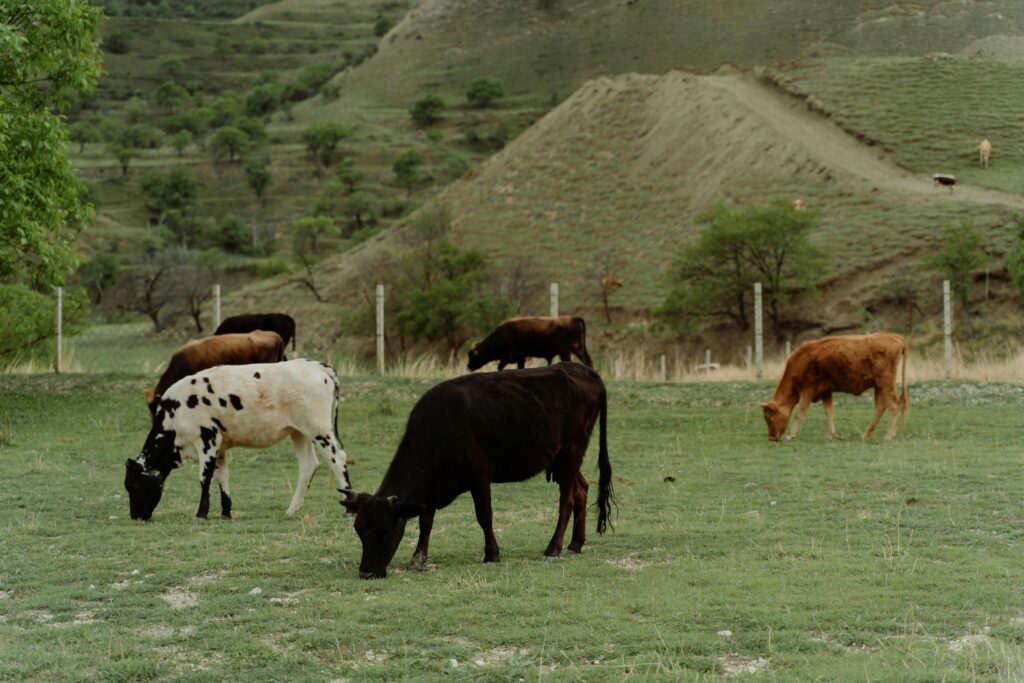If you’re dreaming of a simpler, more self-sufficient life, buying land to homestead is one of the most exciting, and important decisions you’ll make. Before you jump in with both feet, there are a few key things to look for that can make your homesteading journey smoother from day one.

Look for Useful Infrastructure That Will Save You Time and Money
One of the best things you can find when buying land to homestead is existing infrastructure that’s still in good condition. A small barn, shed, or animal shelter might not seem like a big deal at first. Having those things in place can save you time and money during your first few years. Check to see if the barns have electricity. Having power run to outbuildings is a huge bonus and can make tasks like milking, brooding chicks, or storing tools much easier.
Also look for outdoor water access. Is there a well on the property? Are there exterior faucets or spigots in convenient spots around the garden area or near animal shelters? Watering your animals and plants by dragging hoses hundreds of feet is not a fun way to spend your mornings. These small details make a big difference.
Don’t forget to assess the fencing. Fencing costs have skyrocketed in recent years. It’s something many buyers overlook until they’re faced with the expense of installing it themselves. Check for existing fencing, especially around the perimeter of the property. A strong permanent perimeter fence is always recommended-even if you plan on using electric fencing for rotational grazing or interior paddocks. Electric fencing is a great tool, but only effective when the power is working. Having a solid perimeter fence add an extra layer of security for your animals and peace of mind for you.

Ask About The Land’s History and Test The Soil
Before you get too attached to a piece of property, ask: What was this land used for previously? If it was used for commercial farming or industrial purposes, there’s a chance the soil could be depleted or even contaminated. Even if it was just used as a hay field or pasture, it’s still a good idea to have a soil test done. This simple test can tell you a lot about the land’s fertility and whether it’s suitable for growing food and raising animals.
Soil tests are inexpensive but can save you a lot of trouble down the road. They’ll tell you about pH levels, nutrient content, and whether any amendments are needed to support a healthy garden or orchard.
Pay Attention to the Land Itself-Even in the Dry Season
The house might catch your eye first, but don’t overlook the condition of the land. A beautiful field might turn into a soggy swamp come spring. Even in the dry season, you can spot clues about poor drainage or seasonal flooding. Watch for areas where moss or other water loving plants are growing. Those are often indicators of low, wet spots.
Walking the land thoroughly will give you a better sense of its potential. Ask about previous flooding issues, and don’t be afraid to take lots of pictures while you’re there. It’s easy to forget what you saw after a long day of house hunting.
Don’t be Afraid to Ask Questions (And Write Everything Down)
When you’re buying homestead land, it’s easy to get overwhelmed or excited, and forget to ask critical questions. Bring a notebook and jot things down as you go. Ask about the age of the roof, the condition of the septic system, when the well was last tested, and what kind of heating the home uses. Is there a wood stove or option to install one? Are there energy-efficient systems in place?
A Simple Homestead Can Still Be a Great Homestead
Don’t stress if the house isn’t picture-perfect. You can always paint a wall or replace a countertop. What can’t be fixed easily is a crumbling foundation or a failing roof. Make sure the bones of the home are solid- foundation, roof, windows, plumbing, and electrical. Focus on finding a home that’s just the right size for your family and your goals, with space for food storage. A basement, root cellar, or large pantry can go a long way toward helping you stock up for the winter or preserve your harvest.
Final Thoughts
Buying homestead land is about more than just acreage and pretty views. Look for the practical things-usable structures, access to water, healthy soil, good fencing, and a solid functional home. Ask about the land’s history, test the soil, and walk the property with a critical eye. Take your time, ask lots of questions. Try to see the property not just for what it is, but what it could become. Your dream homestead doesn’t have to start perfect-it just has to have good bones, and a little potential.
